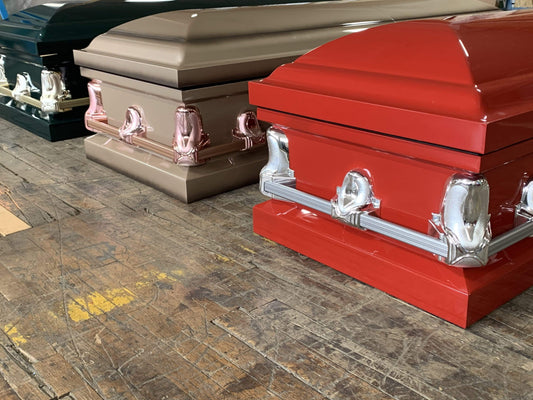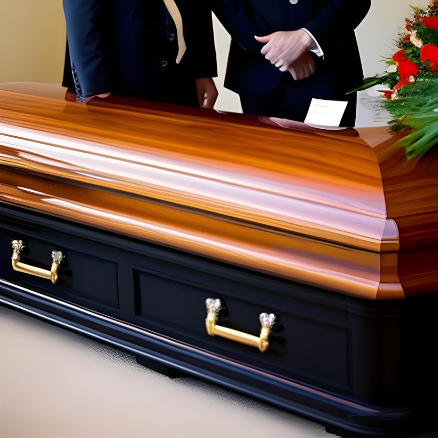Mortician vs Undertaker vs Funeral Director
Funeral planning is a very complicated task with several sub tasks that can leave your head spinning as you come across so many concepts you have never encountered before. For example, you might find yourself wondering: what is an undertaker? What is a mortician? And lastly, what is a funeral director? Read on to find the answers to these questions.
- Undertaker: An Undertaker is a person responsible for the practical aspects of handling the deceased, such as preparation and transportation.
- Mortician: A Mortician, often used interchangeably with Funeral Director, is a term that focuses on the technical aspects of the role, such as embalming and preparing the deceased, in addition to funeral planning and support.
- Funeral Director: This term places greater emphasis on the directorial and organizational aspects of the role. A Funeral Director is responsible for coordinating and directing all aspects of the funeral service, ensuring it proceeds smoothly, and offering support to the family.
The good news is that these are all essentially different terms for the person carrying out end-of-life arrangements at a funeral. These include but are not limited to embalming (preserving the body), making arrangements for the funeral ceremony, and performing the actual burial or cremation when the time comes. Although in smaller funeral homes, funeral directors are one and the same as morticians, there are cases at bigger funeral homes where the funeral director is a separate entity.
Embalming
People opt for embalming the body of the deceased so that they can arrange for a viewing for the loved ones at the funeral. Embalming is largely divided into two parts: the first part is surgical and the second is cosmetic.
1. Pre-Embalming Disinfection: Before the surgical part of the embalming process begins the body is disinfected in its entirety, after which the body also receives massage, especially the limbs, to help with loosening up the stiffness. At this time, the deceased’s jaws and eyes are also positioned appropriately, sometimes with wiring or glue.
2. Organ Preservation in Embalming: The surgical part of embalming involves replacing the blood in the body of the deceased with formaldehyde-based chemicals. The organs of the deceased are not removed unless they are a registered organ donor. In other cases, the organs remain inside. In cases where the organs are to remain inside, they are also drained of fluids surgically through an incision in the lower abdomen so as to embalm the body cavities. Once this incision has been sutured, the surgical part of the embalming process is complete.
3. Body Enhancement Process: The final step in this process is cosmetic preparation of the body of the deceased. An appropriate amount of makeup is applied to improve the appearance of the body during the viewing. For example, some blush might be applied to impart some color to the cheeks. In some cases, the hair of the deceased will also be washed and styled in a suitable manner. Lastly, clothing provided by the family members of the deceased will be used to dress the body. The person performing this process of embalming might require a separate license in some states, but there are many cases where that is not required and so the funeral director can do the embalming with their existing license.
Making the Funeral Arrangements
The funeral director is generally also the owner of the funeral home and is responsible for its daily operations. In some cases the funeral director can be a separate employee and not be the owner of the funeral home. The funeral planning part of a funeral director’s job involves things like filling out the necessary paperwork, and communicating and coordinating with the client (usually the deceased’s family). Given the duties of the funeral director, it is essential that they have strong soft skills to manage such complex situations.
Funeral directors need to be licensed, and the licensing requirements can vary among states. In addition to providing comfort and guidance to the family members, the funeral director is also responsible for logistical arrangements such as the transport of the body or ashes. If the mortician is a separate person, then the duties revolving around embalming and cosmetic preparation of the body will lie solely with the mortician.
Other End-of-Life Professionals
During funeral planning, there are end–of-life professionals other than the funeral director and mortician that you might come across. There are coroners and medical examiners, who are responsible for conducting the autopsy and determining the cause of death which can then be reflected on the death certificate. There are also estate executors who are responsible for executing the will of the deceased. They will first be directed by the court to pay off any debt or taxes, after which the estate executor can distribute the deceased’s assets as determined in the will.
Conclusion:
In conclusion, understanding the distinctions between an Undertaker, Mortician, and Funeral Director is crucial in ensuring a seamless and respectful farewell for your loved ones. Pre-planning your ceremony with Titan Casket allows you to provide the gift of a peaceful ceremony and ease the burden of arrangements during a difficult time. Start your pre-planning journey today by pre-ordering a casket and benefiting from rate locking and flexible payment options.

![Upgrade to Premium Weight [18-gauge steel]](http://titancasket.com/cdn/shop/products/casketthicknesswithnumbers.png?v=1680642906&width=533)



